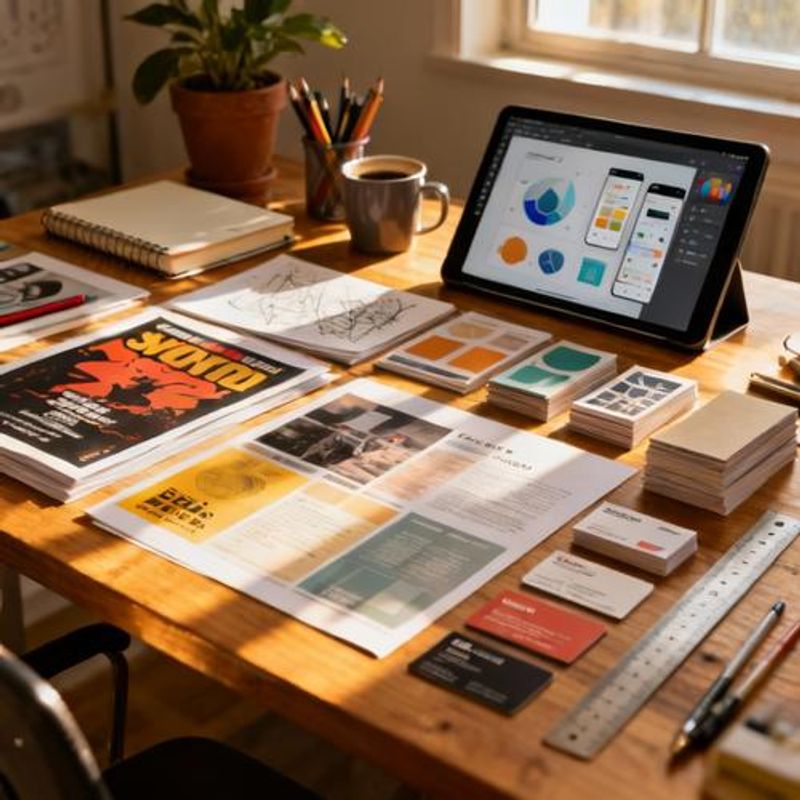The Complete Guide to Essential Design Tools for Beginners: From Free Options to Professional Software

Starting your design journey can feel overwhelming when faced with hundreds of design tools claiming to be "essential." This comprehensive guide cuts through the noise to reveal the exact design tools you need as a beginner, why you need them, and how to choose between free and paid options without breaking your student budget. By the end, you'll have a clear roadmap to building your design toolkit strategically.

Why Choosing the Right Design Tools Matters for Your Learning Journey
As a design student or beginner, you're not just learning principles and theory—you're building muscle memory with tools that will define your professional capabilities. The design tools you choose now will influence your portfolio quality, job prospects, and creative workflow for years to come. Many students make costly mistakes by either choosing tools that are too advanced (wasting time and money) or too basic (limiting their growth potential). The key challenge isn't just finding good design tools—it's finding the right tools for your current skill level, budget, and career goals.
Essential Design Tools by Category: Quick Reference
Here's your essential design tools checklist organized by priority and budget tier:
- Vector Graphics (Essential): Adobe Illustrator or Figma (free alternative)
- Photo Editing (Essential): Adobe Photoshop or GIMP (free alternative)
- UI/UX Design (High Priority): Figma or Adobe XD
- Typography & Layout (Important): Adobe InDesign or Canva Pro
- 3D Design (Optional): Blender (free) or Cinema 4D

Vector Graphics: Your Foundation for Logo and Illustration Work
Vector graphics form the backbone of professional design work. Unlike pixel-based images, vectors scale infinitely without quality loss—crucial for logos, icons, and print materials. Adobe Illustrator remains the industry standard, offering advanced typography tools, precise pen control, and professional color management. However, Figma has emerged as a powerful free alternative that runs in your browser, making it perfect for students. Start with Figma to learn vector principles, then consider upgrading to Illustrator when you need advanced features like complex gradients, advanced typography controls, or print-specific color spaces.
Photo Editing: Essential Skills for Every Designer
Photo editing isn't just for photographers—modern designers regularly work with images, create digital compositions, and design web graphics. Adobe Photoshop offers unmatched capability for complex compositing, advanced retouching, and professional photo manipulation. For budget-conscious students, GIMP provides 80% of Photoshop's functionality at zero cost, though with a steeper learning curve. Focus on mastering layers, masks, and basic color correction first. These skills transfer across all design disciplines and are expected in most design positions.
UI/UX Design Tools: Designing for Digital Experiences
UI/UX design represents one of the fastest-growing areas in design, with specialized tools built for digital product design. Figma leads this space with real-time collaboration, component systems, and prototyping capabilities—all free for students. Adobe XD offers similar features with tight integration to other Adobe products. These tools handle responsive design, user flows, and interactive prototypes that static design software cannot match. Even if you're not pursuing UI/UX specifically, these skills enhance your versatility as a designer.
Budget-Friendly Tool Combinations for Students
Free Starter Kit: Figma (vector graphics & UI/UX) + GIMP (photo editing) + Canva (quick layouts). This combination covers 90% of student design needs at zero cost. Mid-Budget Option ($20/month): Adobe Creative Cloud Student Discount gives you access to Photoshop, Illustrator, and InDesign—the professional standard. Advanced Setup ($50+/month): Full Adobe Suite plus specialized tools like Sketch or Principle for advanced interactions. Start with the free option and upgrade only when specific projects require professional features.

Common Mistakes When Choosing Design Tools
Tool Hopping: Switching between design tools every few months prevents you from developing deep expertise. Stick with one primary tool per category for at least 6 months. Over-investing Early: Spending on premium software before mastering free alternatives wastes money and creates pressure to justify the expense. Feature Overload: Choosing tools with advanced features you won't use for years can overwhelm beginners and slow learning progress. Ignoring Industry Standards: While free tools are excellent for learning, some industries expect proficiency in specific software—research your target field's requirements.
Your Next Steps: Building Your Design Tool Mastery
Start with Figma for your first vector graphics project this week—create a simple logo or icon to get familiar with the interface. Download GIMP and complete one photo editing tutorial to understand layers and basic corrections. Set a budget for design tools based on your current needs, not aspirational goals. Remember: the best design tools are the ones you actually use consistently. Focus on mastering fundamentals with free options before investing in premium software. Your skills matter more than your software—but having the right design tools removes barriers to expressing your creativity professionally.